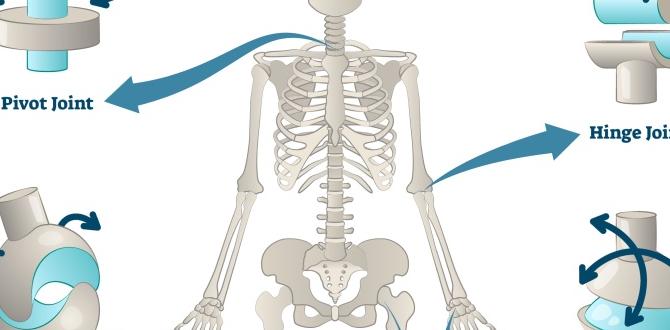Have you ever wondered why your dog pulls on the leash at home? It’s a common problem for many pet owners. Dogs often get excited when they see their leash. This excitement can lead to pulling. Sometimes, it feels like they are taking you for a walk! Let’s explore why this happens and how to fix it.
Key Takeaways
- Leash pulling is common among dogs of all ages.
- Training can reduce dog leash pulling at home.
- Consistency is key to stopping leash pulling behaviors.
- Treats and rewards can encourage good leash manners.
- Understanding why dogs pull helps prevent it.
Understanding Why Dogs Pull on the Leash
Dogs pull on the leash for many reasons. One reason is excitement. When dogs see their leash, they know it’s time for a walk. This makes them eager and energetic. Another reason is curiosity. Dogs love to explore their surroundings. They want to sniff everything and move quickly. Sometimes, pulling is a habit. If a dog has always pulled, it may not know any better. It’s also possible they pull to reach something they want, like another dog or a squirrel.
- Dogs get excited when they see their leash.
- Curiosity leads dogs to explore new scents.
- Pulling can be a long-time habit.
- Dogs may pull to reach exciting things.
- Lack of training can lead to pulling.
Understanding why dogs pull is the first step. If we know the reason, we can find the right solution. Training is important to prevent leash pulling. Patience and consistency are needed. With time, dogs can learn to walk calmly. It’s important to stay calm and not pull back on the leash.
Fun Fact or Stats : Did you know? Dogs have about 300 million smell sensors, compared to our 5 million!
Why Do Dogs Get Excited About Leashes?
When dogs see their leash, they know something fun is about to happen. Imagine if you only got to go outside when you saw a special object. You’d probably get excited, too! For dogs, this object is the leash. Dogs connect the leash with walks, play, and new smells. This excitement can sometimes lead to pulling. They can hardly wait to explore the world outside. It’s important to help dogs manage this excitement with proper training.
Is Pulling a Sign of Bad Behavior?
Not always. Pulling can be a sign of excitement or curiosity instead of bad behavior. Think about when you’re really eager to do something fun. Sometimes you might rush or jump ahead. Dogs do the same when they pull on the leash. It’s not that they are bad; they just need guidance. Training helps them learn good manners. Once trained, they can walk calmly without pulling.
How to Break the Habit of Pulling
Breaking the pulling habit takes time and patience. Start by using a short leash. This gives you better control. When your dog pulls, stop walking. Wait until they calm down before continuing. This teaches them that pulling won’t get them anywhere. Use treats to reward good behavior. Praising your dog for walking nicely helps reinforce good habits. Consistency is key. With practice, your dog will learn not to pull.
Training Techniques to Stop Pulling
Training is essential to stop leash pulling. Start in a quiet room at home. Use treats to motivate your dog. Hold a treat in your hand and let your dog sniff it. Walk a few steps. When your dog walks by your side, give them the treat. Repeat this exercise daily. Gradually increase the distance and distractions. Practice in different areas of the house. Consistency and patience are crucial. With time, your dog will learn to walk calmly.
- Begin training in a quiet space.
- Use treats to encourage your dog.
- Practice walking in short, calm sessions.
- Increase distance and distractions slowly.
- Be patient and consistent every day.
Training requires time and effort, but the results are rewarding. A well-behaved dog makes walks more enjoyable for both of you. Don’t rush the process. Allow your dog to learn at their pace. Every dog is unique. Adjust your training methods based on what works best for your dog.
Fun Fact or Stats : Puppies have a short attention span. Training sessions should be less than 10 minutes!
What If My Dog Is Stubborn?
Some dogs are naturally more stubborn than others. But don’t worry, you can still train them. Be patient and persistent. Use extra tasty treats as motivation. You could try small pieces of chicken or cheese. If your dog resists training, consider seeking help from a professional trainer. They can offer tailored advice for your dog’s needs. Remember, patience is key with stubborn dogs. Celebrate small victories during training sessions.
Are Harnesses Better Than Collars?
For many dogs, harnesses are better than collars. A harness reduces strain on a dog’s neck. This makes it safer and more comfortable for them. Harnesses are especially helpful for dogs that pull a lot. It gives you more control. Your dog may find it easier to stay by your side. When choosing a harness, make sure it fits well. An ill-fitting harness can cause discomfort. Measure your dog before buying a harness to ensure the right size.
How Long Does Training Take?
Training timelines vary based on each dog. Some learn quickly, while others take time. Generally, you should see progress within a few weeks. Practice short sessions daily. Keep training fun and engaging for your dog. Celebrate improvements, no matter how small. Regular training strengthens your bond with your dog. With patience and consistency, your dog will learn to enjoy calm walks.
Choosing the Right Tools for Training
Having the right tools makes training easier. A sturdy leash and a comfortable harness are important. They provide control and comfort for your dog. Avoid retractable leashes. They can encourage pulling. Instead, use a fixed-length leash. Treats are essential for rewarding good behavior. Use small, tasty treats that your dog loves. Clickers can also help with training. They make a sound to signal correct behavior. Choose tools that suit your dog’s size and training needs.
- Use a sturdy, fixed-length leash.
- Choose a comfortable harness for your dog.
- Avoid retractable leashes to prevent pulling.
- Pick small, tasty treats as rewards.
- Consider a clicker for marking good behavior.
Tools alone won’t make training successful. They must be used consistently and correctly. The wrong tools can hinder progress. Always ensure your dog’s comfort during training. Check that harnesses and leashes fit well. Frequent practice helps reinforce good habits. With the right tools and methods, training becomes a positive experience.
Fun Fact or Stats : Did you know? Dogs can learn over 165 words and signals!
Why Are Leashes Important?
Leashes keep your dog safe when outside. They prevent your dog from running into danger. Imagine a busy street. A leash stops your dog from darting into traffic. It also helps you control your dog’s actions. This is important for both small and large dogs. A leash ensures your dog stays by your side. It helps them learn good walking manners.
What Treats Work Best?
Choose treats your dog loves. Tiny pieces of chicken, cheese, or special dog treats work well. These treats should be small and easy to eat quickly. They should be different from their usual food. This makes them more exciting. Reward your dog as soon as they display good behavior. Timely rewards help reinforce the desired actions quickly.
Should I Use A Long Leash?
Long leashes can be useful for training in open spaces. They give dogs more freedom to explore. However, they also allow dogs to pull more. In the beginning, use a shorter leash to keep control. As your dog learns not to pull, you can try longer leashes. Always supervise your dog closely when using long leashes. Ensure their surroundings are safe and secure.
Creating a Consistent Training Routine
Consistency is crucial for successful training. Set a regular time each day for training. Short sessions work best. Keep them fun and engaging. Use the same commands each time. Consistency helps your dog understand what’s expected. Always reward good behavior. This reinforces learning and builds a strong habit. Training should fit into your daily routine. Make it a positive experience for your dog.
- Set a regular training time daily.
- Keep sessions short and fun.
- Use consistent commands and rewards.
- Incorporate training into your routine.
- Ensure training is a positive experience.
Creating a consistent routine helps your dog learn better. The more you practice, the faster your dog will improve. Be patient and keep things positive. Your dog looks to you for guidance. Training builds your dog’s confidence and trust in you. With routine practice, walks become more enjoyable for both of you.
Fun Fact or Stats : Dogs can understand and interpret human emotions, can you believe that?
How Often Should I Train My Dog?
Training should be a part of your daily routine. Short, daily sessions are most effective. Aim for at least 10 minutes each day. On busier days, even a few minutes can help. Consistent practice reinforces learning. It keeps your dog engaged and focused. Regular training helps your dog remember commands. Frequent training builds a strong bond between you and your dog.
What If My Dog Gets Bored?
Dogs, like humans, can get bored with routine. To keep training fun, change things up. Use different locations in your home or yard. Rotate toys and treats to maintain interest. Dogs love variety. New challenges keep them eager to learn. If your dog shows signs of boredom, take a short break. Resume training when they’re ready.
Is It Okay to Skip Training Days?
Consistency is key, but life can get busy. It’s okay to skip a day occasionally. However, try not to skip too often. Regular practice helps your dog remember what they learn. If you miss a day, keep sessions longer or more frequent the next time. Balance training with rest and play to maintain your dog’s enthusiasm.
| Dog Behavior | Reason | Solution |
|---|---|---|
| Pulling on Leash | Excitement | Training and Consistent Practice |
| Jumping | Greeting People | Teach Sit Command |
| Barking | Alert or Fear | Desensitization |
| Chewing | Boredom | Provide Chew Toys |
Conclusion
Stopping dog leash pulling at home takes patience and consistency. Understanding your dog’s behavior is the first step. Training tools, techniques, and regular practice are key. With time, your dog will enjoy calm walks. Keep sessions positive and fun. Celebrate small successes. A well-behaved dog makes walks enjoyable for everyone.
FAQs
Question: Why does my dog pull on the leash at home?
Answer: Dogs pull on the leash at home due to excitement or curiosity. They may associate the leash with fun activities, like walks and playtime. Understanding and addressing these reasons through training can help reduce pulling.
Question: Is it possible to train my dog not to pull on the leash?
Answer: Yes, it is possible! Consistent training, using treats and rewards, can teach your dog to walk calmly. Start training in a quiet area and gradually introduce distractions to improve their focus.
Question: What tools can help reduce dog leash pulling at home?
Answer: A sturdy, fixed-length leash and a comfortable harness are essential. Avoid retractable leashes, as they encourage pulling. Use small, tasty treats to reward good behavior and consider a clicker for marking actions.
Question: How long does it take to stop leash pulling?
Answer: Training timelines vary by dog, but progress can be seen in a few weeks. Consistency and daily practice are crucial. Keep sessions fun and engaging to maintain your dog’s interest.
Question: Should I use a short or long leash for training?
Answer: Start with a shorter leash to maintain control. As your dog learns not to pull, you can gradually introduce longer leashes. Always supervise your dog closely, especially in open spaces.
Question: Can professional trainers help with leash pulling?
Answer: Yes, professional trainers can offer valuable advice and tailored strategies. They can help with stubborn dogs and provide guidance specific to your dog’s needs. Don’t hesitate to seek their expertise if needed.
Meet Elyse Colburn, the devoted canine companion and storyteller behind the enchanting world of “Tales, Tails, and Adventures Unleashed.” A passionate dog enthusiast with a heart full of paw prints, Elyse Colburn shares heartwarming tales and insightful adventures, celebrating the joy, loyalty, and endless antics that make every dog a true hero. Join Elyse Colburn on this tail-wagging journey, where every post is a love letter to our four-legged friends.








